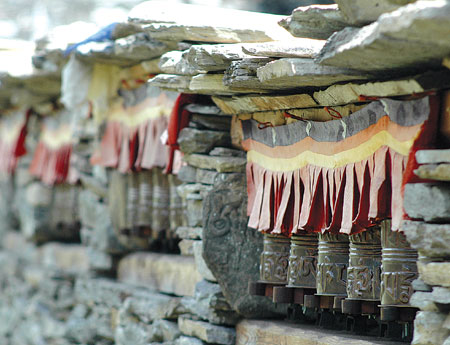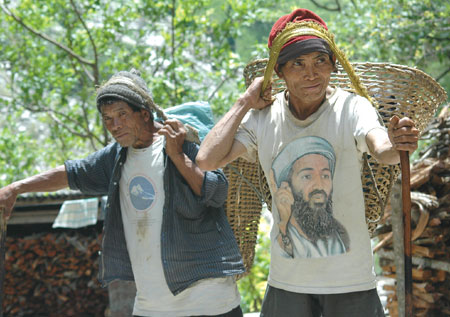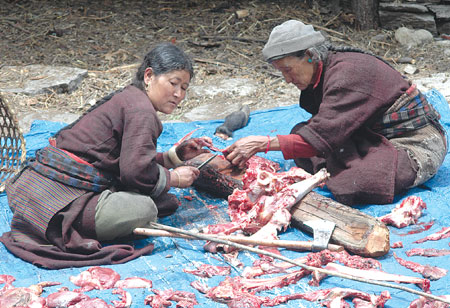
(TEXT and PICTURE by KIRAN PANDAY)
Ever since a Japanese expedition first made a reconnaissance of the eastern slopes of Mt Manaslu, the eight-thousand metre peak in central Nepal has been as good as adopted by the Japanese.
With the pre-monsoon clouds snapping at our heels, we raced up the Budi Gandaki valley trying to outrace the rains. In village after impoverished village in this remote region, children would run up to their parents as we approached to announce: "Japanese are coming, Japanese are coming". All outsiders here are known as "Japanese".
In 1956 when the Japanese expedition arrived to make a serious push on the mountain from the northeast ridge, the rimpoche in the town of Loh actually tried to stop them saying it was a holy mountain and shouldn't be climbed-the mountain is in fact named after the spirit, or manasa. The Japanese went ahead anyway, and climbed the mountain with Tashio Imanishi and Gyalzen Norbu Sherpa setting foot on the summit . The Japanese kept coming back, with an all-woman team climbing the mountain in 1974.
Besides being a strikingly beautiful mountain, Manaslu is also the only peak in the world from the summit of which one can see seven other 8,000ers in Nepal, all except Kangchenjunga.
Manaslu can be circumambulated on the Budi Gandaki trek that begins in Aru Ghat, past Larke Pass (above) into Manang and down the Marsyangdi to Besisahar. This is probably the wildest and most natural treks in Nepal.
Along the way you see slices of a very different kind of life, from communal carving up of yaks, to Tibetan-medium schools, and influences from the outside world that would not be amusing elsewhere, but here just underscore the remoteness of this valley. The porter sporting the bin Laden t-shirt knew only that it was "someone very famous".
The landscape is spectacular, and the walk challenging. The only hikers you see might be your own group.












